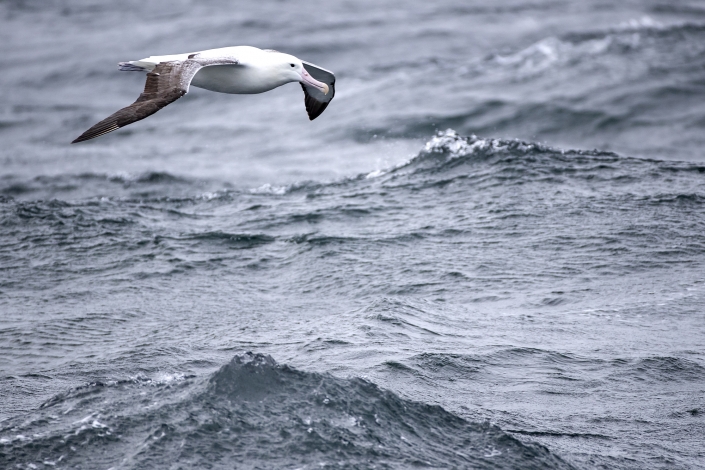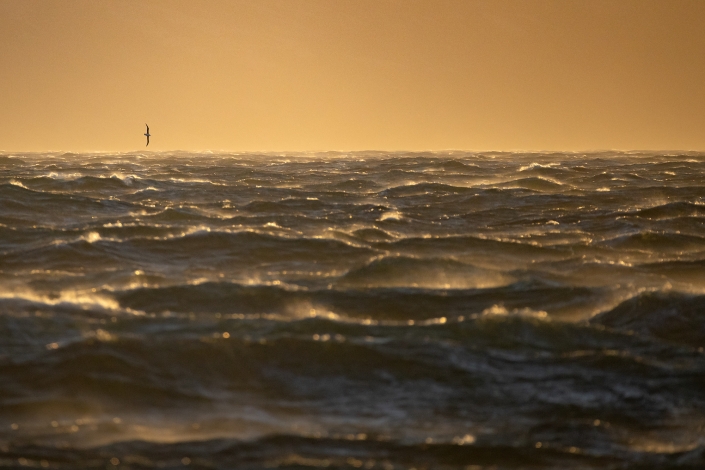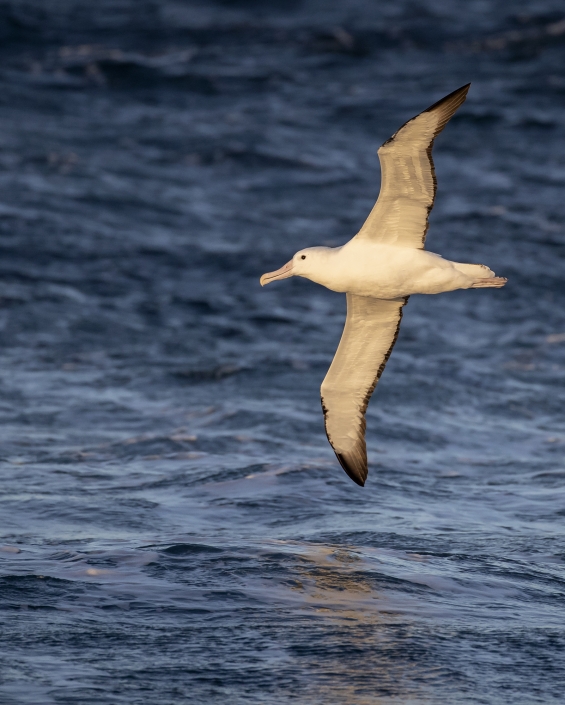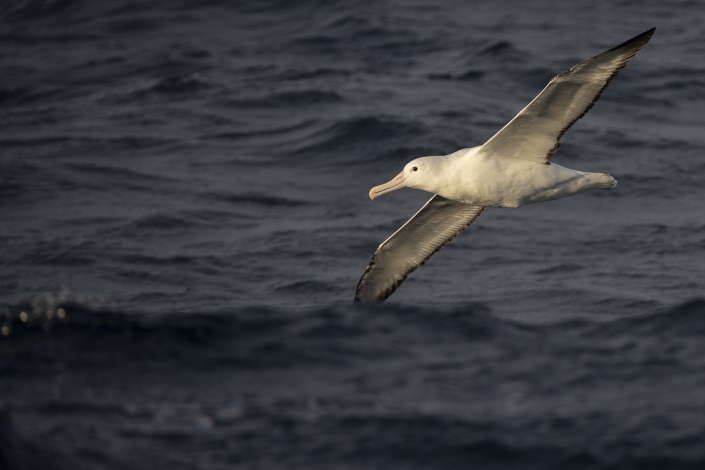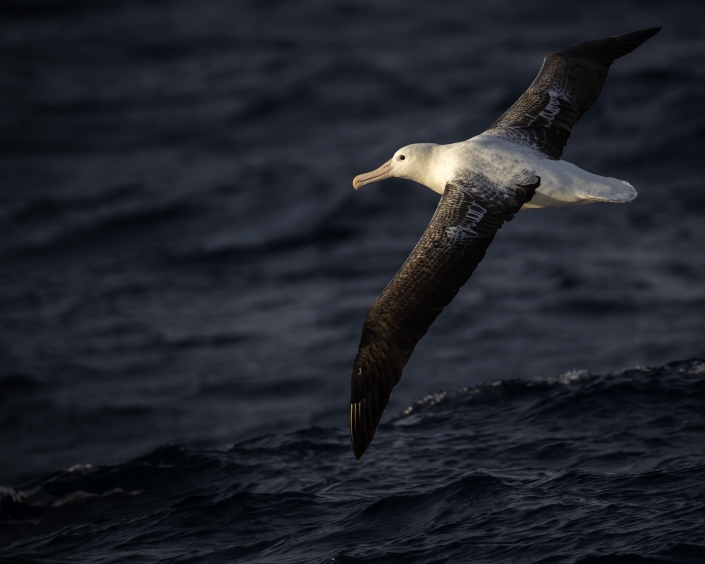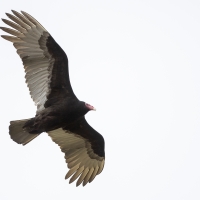This post is also available in: Swedish
Southern royal albatross – Diomedea epomophora
Southern royal albatross – Diomedea epomophora
is a large seabird from the albatross family. At an average wingspan of above 3 m (9.8 ft), it is one of the two largest species of albatross, together with the wandering albatross. Recent studies indicate that the southern royal albatross may, on average, be somewhat larger than the wandering albatross in mass and have a similar wingspan,[2] although other sources indicate roughly similar size for the two species. The southern royal albatross has a length of 112 to 123 cm (44–48 in)[11] and a mean weight of 8.5 kg (19 lb). At Campbell Island, 11 males were found to have a mean mass of 10.3 kg (23 lb) and 7 females were found to have a mean mass of 7.7 kg (17 lb), thus may be heavier on average than most colonies of wandering albatross.[3] Males are about 2 to 3 kg (4.4 to 6.6 lb) heavier than females. Average wingspan has been reported from 2.9 to 3.28 m (9.5 to 10.8 ft), with an upper limit of about 3.51 m (11.5 ft). The wandering albatross can exceed this species in maximum size and averages slightly larger in linear dimensions if not bulk, but the two species are close enough in dimensions that size cannot be used to distinguish between them. The juvenile has a white head, neck, upper mantle, rump, and underparts. There are black speckles on the mantle, and they have dark brown or black wings with white flecks on coverts. Their tail is white except for the black tip as is the under-wing. Young birds soon lose the black on their tail and backs. White appears on the upperwing gradually, as speckles starting from the leading edge. All ages have a pink bill with black on the cutting edge on the upper mandible, and the legs are flesh.
Young birds with all dark upperwings can be hard to differentiate from the northern royal albatross. There are clear but subtle differences compared to the wandering albatross, with the southern having a clean black and white appearance, lacking the peach neck spot often found on the wandering albatross. Most wandering albatrosses have dark feathers in the tail and crown and the white in this species expands from the middle of the wing, in larger blotches. The bill color is also slightly paler, as well as the dark cutting edge along the middle. The average life span is 58 years.
Most of the royal albatross population is found between 30°s and 45°s. The majority of the world’s population of southern royal albatrosses nest on the rat free Subantarctic Campbell Island, around 8,200 to 8,600 pairs. There are smaller colonies on Adams Island and Auckland Island in the Auckland Islands, 20 pairs combined, and 69 pairs on Enderby Island and some sanfordi X epomophora hybrids at the northern royal albatross colony on the Otago Peninsula in New Zealand. They range along the southern oceans concentrating on the west and east coast of southern South America, and also in the waters surrounding New Zealand.
It sounds like this
Recording by Frank Lambert from Xeno canto




